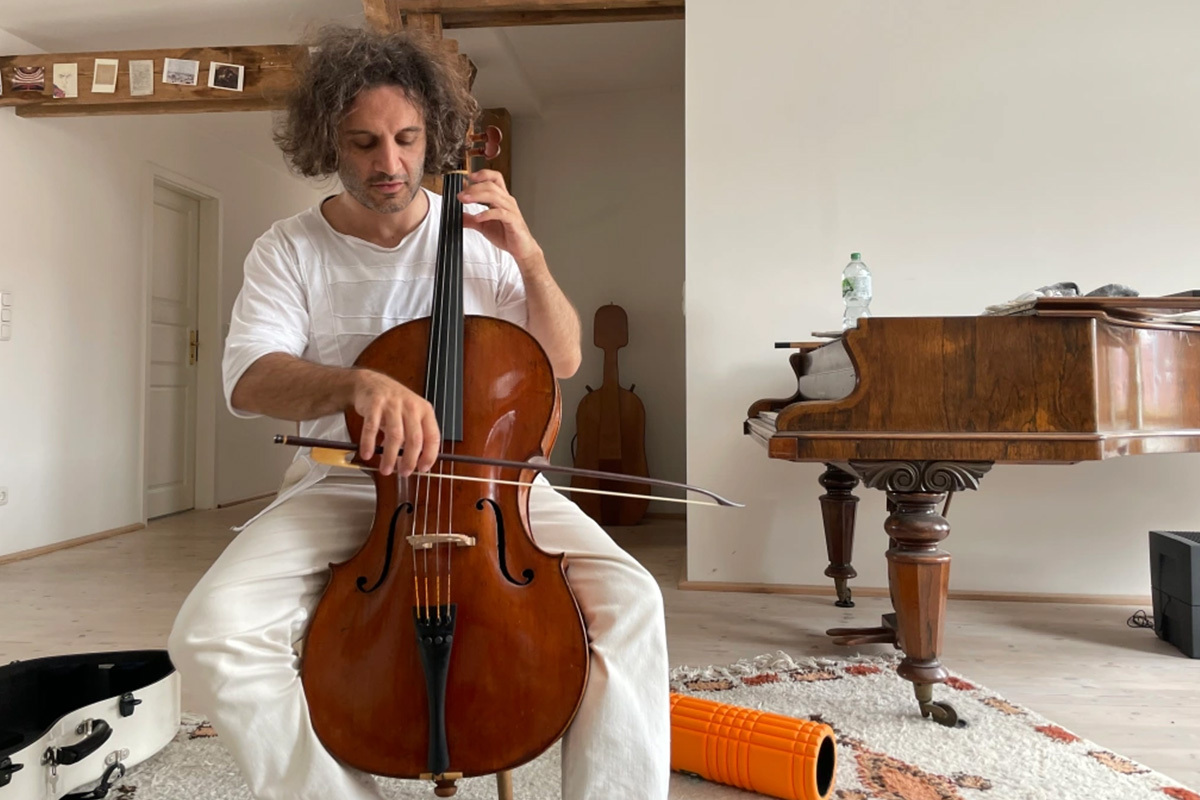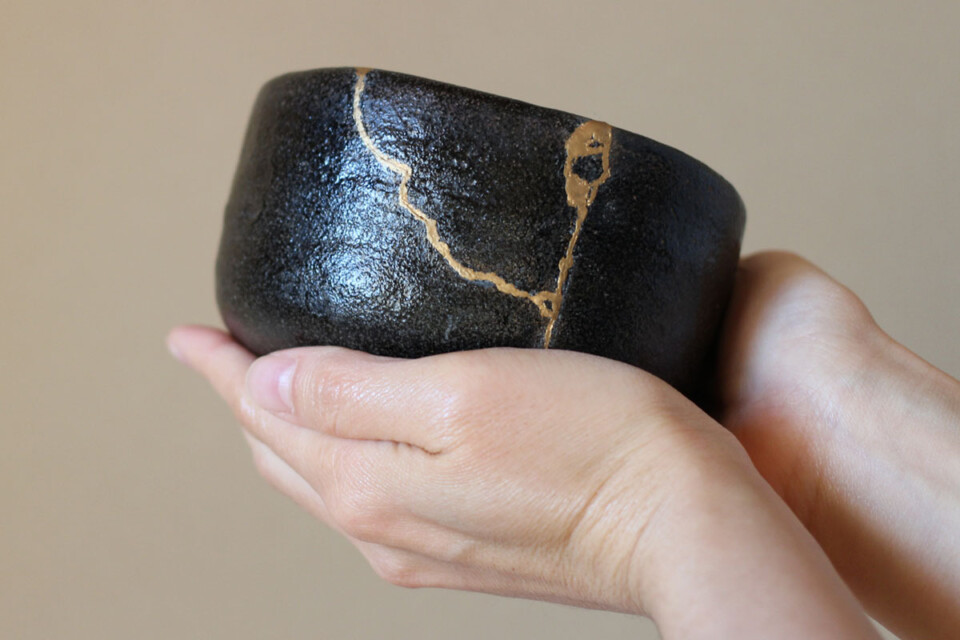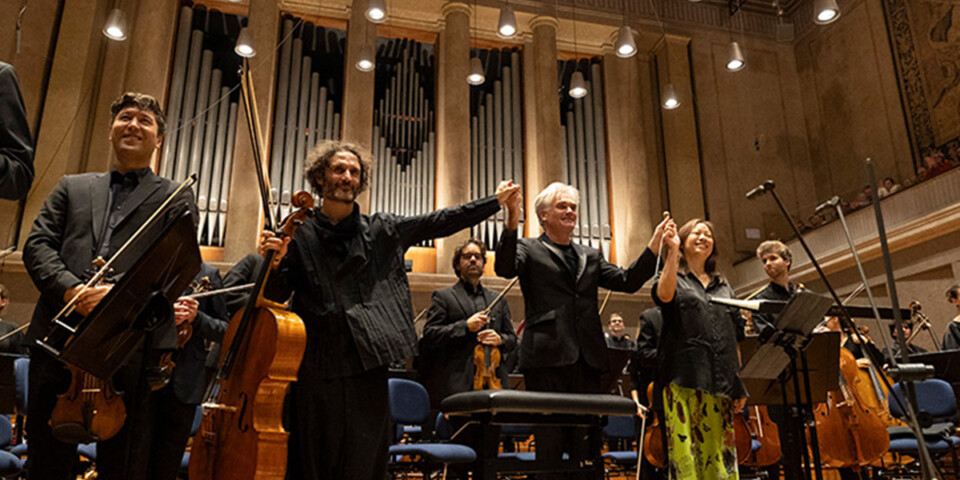In Autumn 2024, Nicolas Altstaedt presented the world premiere of Liza Lim’s A Sutured World (pictured above) with the Symphonieorchester des Bayerischen Rundfunks in Munich. We talked to Altstaedt and Lim about their collaboration ahead of the Australian premiere of the work this March at the MSO's performance of Joined with Gold.
Which aspects of Liza’s new concerto appealed to you in particular?
NA: The reference to the figure of Leiermann fascinated me; the way it can be dealt with in an authentic and inspired way in contemporary musical language. Liza managed not to let the use of two bows deteriorate into an effect, but to integrate it musically as something necessary. The visuals were touching because they were at one with the sound.
LL: Nicolas’ reference to ‘Der Leiermann’ is the deeply haunting image of the organ grinder or hurdy-gurdy man at the end of Schubert’s Winterreise. Like many, I’ve always found these last moments of the song cycle absolutely devastating—desolate & hallucinatory. Schubert took me to the sound of the rotary mechanics of the hurdy-gurdy: the frictions, the ongoing-ness of the winding repetitions. The concerto begins with a basic rocking movement between the open A and D strings of the cello—the simplest of musical materials. In my sketches I riffed on images of the homeless busker as hidden angel; the ex-fighter with one arm selling tomatoes in the street (can’t find this photo I saw online); a 1-legged man dancing—brokenness and destitution hiding the possibility of joy and vitality and surprising renewal… At the end of the work, the sound of the open strings return, here played with 2 bows—a standard bow and a Baroque bow in a nod to two sides of Nicolas’ musical identity. The two bows interfere with the smooth vibration of the strings, creating extra papery whispers of harmonics—perhaps like the grainy run-out noise of a vinyl record but also for me, a suggestion of the continued turning of the world in all its absurdity and possibility. But I didn’t know that was the ending until I turned the corner right at the end and saw it. This is not so much about what ‘I’ want to say but what gets called forth from the whole corporeal and intangible constellation of me, the cello, its traditions, Nicolas, the orchestra, the ancient and the contemporary & the craziness and compassion on this rotation of the Earth.
What are the particular artistic and technical challenges of A Sutured World?
NA: I think it’s the internalisation of Liza’s language. You need to understand what’s meant behind those black dots on a white sheet of paper, and it requires a lot of creativity to convey that which is close to her heart.
LL: The score has various technical challenges but you wouldn’t know that from the way Nicolas plays. He is totally at one with the cello. At the first rehearsals in both Munich and Amsterdam, I could feel the atmosphere and attention change in the orchestra as soon as he started playing—from ‘work’ to ‘wow’. But the ‘wow’ is not because of the technical brilliance of which there’s no shortage; it’s the sense of oneness and flow and being plugged into something bigger than the everyday that Nic brings to music-making.

How was the collaboration with Liza? Did you collaborate on the solo part?
NA: Liza was curious about my cello playing and my personality beforehand. In Summer 2022 we met in Berlin and I played her something on my cello piccolo. During my tour with the Australian Chamber Orchestra this summer, she came to concerts after the cello concerto was finished several times, and we discussed small details in the score. The evening before the first rehearsal, we went through the part together. She was very precise with her ideas and requirements, and then, from the rehearsals with the orchestra onward, she gave me free reign.
LL: I looked back at our correspondence and saw that I got an email from Nicolas in March 2022 saying that he’d heard my violin concerto Speak, Be Silent on a France Musique radio broadcast. It was pretty exciting to be asked for a new piece like this! Anyway, we met in Berlin and as Nicolas says, he played his piccolo cello and we nerded about cello gut strings, Baroque bows and instruments etc. I then went away and composed the piece. There was the occasional consultation where I sent a bit of a sketch via WhatsApp and actually, none of those items (a different 3rd movement which I threw out; a ‘chop’ technique in the cadenza) made it into the final piece so perhaps that showed me that I only consulted when I knew something wasn’t quite right. One interesting collaborative moment is that after the first rehearsal he gave some really valuable feedback about the form of the work: that the section preceding the cadenza felt like the piece had already ended. Overnight I made a revision adjusting dynamics and I added extra percussion details (triangles) to animate that section so it opened more strongly into a question which is then answered by the cello cadenza. It was definitely an improvement!
You have a very broad repertoire and feel at home with historical performance practice as much as you do with contemporary music. Is there a different way of approaching a completely new piece for you? Particularly with a composer being ‘approachable’ compared to the rest of the repertoire?
NA: Not really, music is still music. Even if the type of notation has changed in the last 400 years, the problem of transferring music onto paper remains. Working with today’s composers is a matter of course for me, but it is not the case that you find all the answers. Even good composers are often reticent, because they are interested in what an interpreter might uncover in their music. They are also learning in this process… what comes closest to their ideas during the rehearsal is often notated differently on the very same day. It’s something we see with Gustav Mahler, where we see revisions in the symphonies he was able to rehearse and perform.
LL: I really appreciate the expressivity and sheer beauty that Nic brings to the music—this truly is what brings the work to life. I think art exceeds the author’s intentions. It’s a misapprehension to think that creators know everything about what they’ve made because the work ultimately takes on a kind of co-creative autonomy as it connects to different players, listeners, and contexts. The multiplicity of the ways we can make and re-make meaning in and around an artwork and meet it anew in different times and places and people and all that we connect with, is hugely life-affirming.

Joined with Gold
Thursday 06 March at 7.30pm
Saturday 8 March at 7.30pm
Arts Centre Melbourne, Hamer Hall
